Embark on a journey to Ogooué-Maritime, where natural wonders, cultural heritage, and historical tales converge, offering a truly immersive experience for every traveler.
Discover Ogooué-Maritime, a captivating province in Gabon, stretching across 22,890 square kilometers. Positioned as the westernmost of Gabon’s nine provinces, it boasts a stunning coastline with the Gulf of Guinea to the northwest and the South Atlantic Ocean to the southwest. At the heart of this province is Port-Gentil, not only serving as the provincial capital but also standing as Gabon’s economic hub.
With an expansive area of 22,890 km², Ogooué-Maritime is a land of diverse landscapes and abundant resources. The province thrives on industries such as oil and forestry, creating a unique blend of environments ranging from lush forests to sprawling savannahs.
For those seeking adventure, Ogooué-Maritime beckons with opportunities for sport fishing in the sea, rivers, and lagoons, as well as the chance to experience safari visions and ecotourism. The wildlife reserves of Petit Loango, the Ouanga plain, and the Gamba protected areas, comprising Iguéla, Ngové-Ndogo, and Setté-Cama, spanning 700,000 hectares, promise unforgettable encounters with a rich array of animal species.
Delve into the province’s interior, where a sparsely populated and challenging-to-reach terrain unveils a thriving ecosystem. Here, chimpanzees, hippos, duikers, antelopes, bush pigs, pangolins, crocodiles, monitor lizards, manatees, and leatherback turtles coexist in harmony. The lagoons, in particular, serve as a haven for a variety of bird species, including weavers, tantalus ibises, kingfishers, redhorses, storks, pelicans, and eagles.
Ogooué-Maritime is subdivided into three departments: Bendjé (Port-Gentil), Etimboué (Omboué), and Ndougou (Gamba). Each department boasts its unique charm and attractions.
The province owes its name to the Ogooué River, a majestic watercourse that traverses its expanse, flowing into the Atlantic Ocean. The Ogooué, also known as the Nazareth River, stands as Gabon’s principal river, boasting a watershed that drains almost the entire country. Mary Kingsley, an intrepid English explorer, discovered the river’s source in 1894, uncovering its beginnings in the Bateke Plateaux near Kengue, Republic of Congo.
Table of Contents
History of Ogooué-Maritime
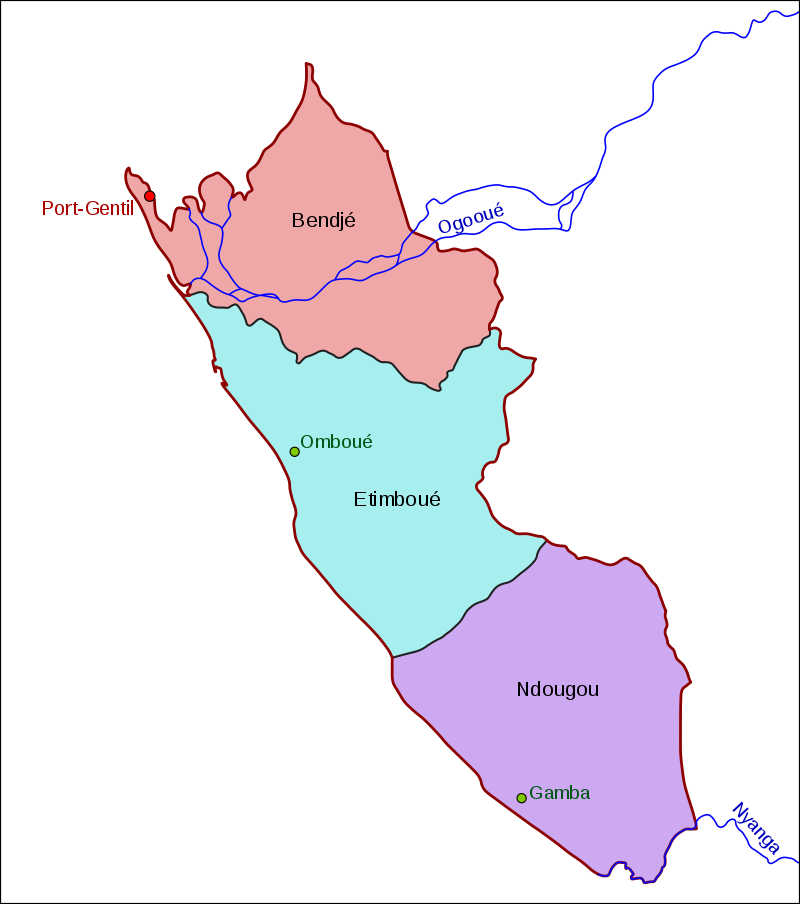
Ogooué-Maritime’s rich history intertwines with the narratives of the southwestern peoples of Gabon. Since the late 15th century, the coasts of southwest Gabon have been explored by Western navigators, notably the Portuguese. The territory was historically divided into two kingdoms, Cama and Loango, each contributing to a vibrant trade network with slavers and freebooters.
As the 17th century unfolded, the slave trade gained prominence along the Ogooué and Rembo Nkomi. Coastal peoples, initially poorly known, gradually opened up to explorers, with Catholic missions establishing a presence in the late 19th century, marking the beginning of a new chapter in the province’s history.
Port-Gentil (Mandji)

Nestled on the island of Mandji, Port-Gentil, also known as Mandji, stands as Gabon’s second-largest city and a prominent seaport, serving as the epicenter of the nation’s flourishing petroleum and timber industries. Located on a delta island in the Ogooué delta, it boasts a diverse landscape, from coastal splendor with pristine white sand beaches to an industrial hub near the oil terminal. This bustling city, with a population of 136,462 as of the 2013 census, offers a unique blend of historical significance and contemporary vitality.
Port-Gentil’s origins trace back to the 15th century when Portuguese navigator Lopo Gonçalves sailed near Cape Lopez. Established on Mandji Island in the Ogooué River delta by the French in 1873, the city played a crucial role as a base for the expeditions of de Brazza into the interior. Over time, it evolved into a vital trading center, dealing in rubber, ivory, and later, the prized okoumé wood.
Named after the French colonial administrator Émile Gentil in 1900, Port-Gentil witnessed significant growth, particularly after Elf commenced oil exploration in the region post-World War I. The establishment of an oil refinery by SOGARA in the 1960s further accelerated the city’s development.
Today, Port-Gentil is renowned for its vibrant nightlife, hotels, and attractions. The city features landmarks like the St Louis Church, a zoo, a casino, beautiful beaches, and a golf course. The city center, situated along the Port-Gentil Bay seaside, houses hotels, banks, shops, and supermarkets, offering a lively atmosphere between Avenue Savorgnan de Brazzaville and the waterfront. Notable landmarks include the Casino de Port-Gentil and the BEAC building in the southern part, adjacent to the port.
While the western Atlantic seaside remains sparsely populated due to strong winds and sea currents, the city continues to draw visitors with its dynamic energy and diverse offerings. Despite the absence of house numbering, Port-Gentil’s charm lies in its historical roots, modern amenities, and the intriguing juxtaposition of its coastal and industrial facets. A visit to this city is not only a gateway to the tourist destinations of Ogooué-Maritime but an opportunity to immerse oneself in the unique ambiance of Port-Gentil’s insular and truly distinctive atmosphere.
Port Gentil: Facilities
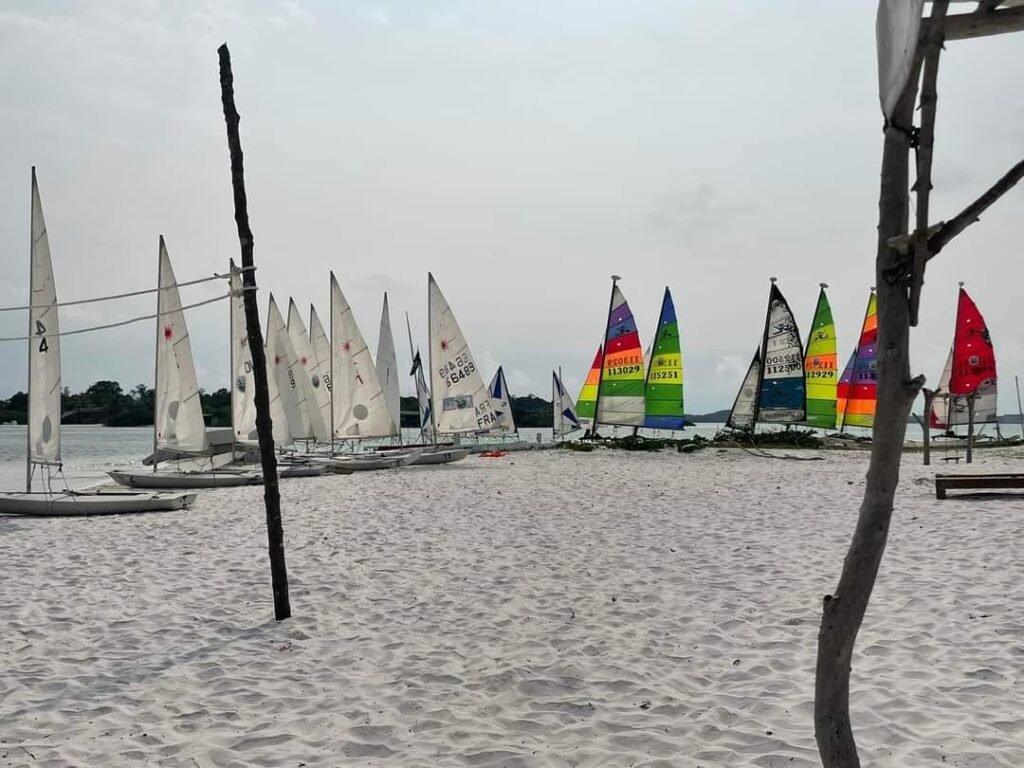
Port-Gentil is seamlessly connected to the world through Port-Gentil International Airport, serving as the primary transportation hub. Regular flights link the city with Libreville, the capital of Gabon, facilitating convenient travel for both residents and visitors.
Infrastructure developments have strengthened Port-Gentil’s connections to the mainland. A network of roads and bridges spans 93 km southwards along the coast to Omboué. This extensive project, financed through a loan from the Export–Import Bank of China, was executed by the China Road and Bridge Corporation in collaboration with GAUFF Engineering.
Navigating the city’s roadways presents some challenges, as the limited number of paved roads within Port-Gentil are inadequately maintained. Paved roads extend from the inner city to the outskirts of new residential districts in N’Tchengue, transitioning to sandy paths with frequent potholes. Traffic congestion is a common sight at road junctions like Carrefour Tobia or Léon Mba, especially near the downtown area. Shared taxi services are prevalent, with negotiable fares typically starting at 400 CFA Francs. Prices double for nighttime rides, and a premium fare is charged for passengers traveling beyond the paved roads due to road difficulties, lack of illumination at night, and pedestrians on the road. The city’s car fleet comprises mostly outdated vehicles due to the exorbitant cost of new imported cars. The absence of local car spare parts manufacturers necessitates imports from as far as Europe, contributing to increased prices and extended delivery durations.
Healthcare facilities in Port-Gentil cater to residents’ medical needs. Clinique Mandji in the Littoral district, Clinique du Littoral on Boulevard du Gouverneur Pélieu, and the Centre du Traitement Ambulatoire on the road to N’Tchengue are notable hospitals within the city.
Educational institutions in Port-Gentil include École Mixte Port-Gentil or École publique conventionnée de Port-Gentil, École primaire Léopold Sédar Senghor (French primary school), and Lycée Français Victor Hugo de Port-Gentil (French secondary school).
A variety of places of worship grace the cityscape, predominantly Christian churches, and temples such as the Roman Catholic Diocese of Port-Gentil (Catholic Church), Assemblies of God, and the Evangelical Church of Gabon. Additionally, there are Muslim mosques, contributing to the city’s diverse spiritual landscape.
Mandji Island: Port-Gentil’s Ecological Diversity
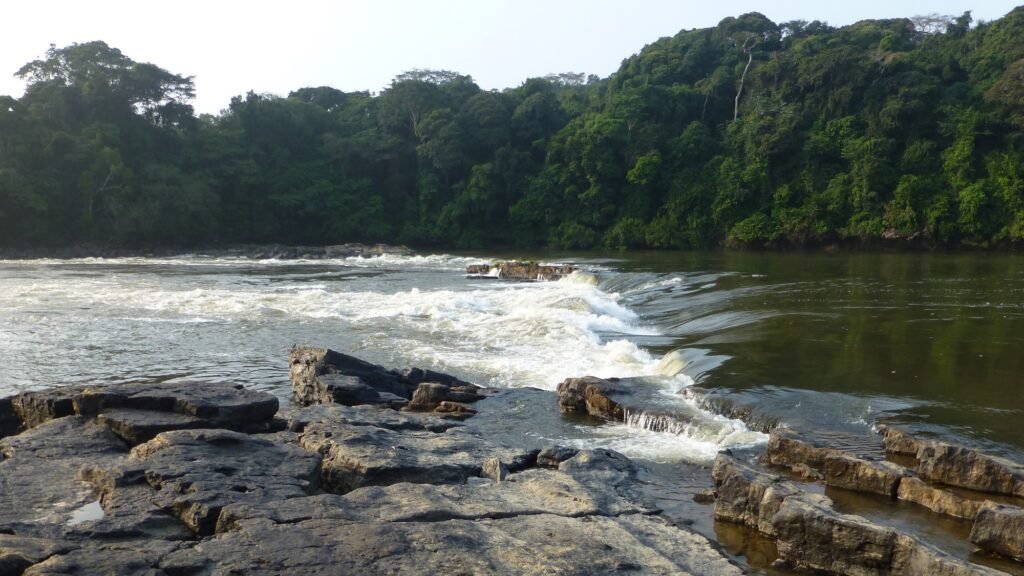
Nestled near Port-Gentil on Cape Lopez, the westernmost region of Gabon, Mandji Island encompasses a captivating tapestry of ecosystems within the Ogooué river delta. This 2001 baseline site description unveils the rich biodiversity of Mandji Island, showcasing its diverse landscapes, avian inhabitants, and unique non-bird species.
The island’s mosaic of environments includes dunes, coastal grasslands, swamps, patches of littoral forests, Dalbergia ecastaphyllum thickets, and expansive mangroves along the Ogooué. In the southern half, extensive short-grass savannas on sandy soil harmonize with herbaceous swamps and littoral forests adorned with Chrysobalanus icaco. Dry forest patches reveal tree species like Sacoglottis gabonensis, Pachypodanthium confine, and Cola flavovelutina, while the swamp-forests feature Mitragyna ciliata. The landscape also boasts large mudflat areas in Cape Lopez Bay, contributing to the island’s distinctive character.
Key Biodiversity: Mandji Island emerges as a haven for diverse avian species, with 323 recorded, yet the list remains undoubtedly incomplete. Six globally significant species have been identified, with only one, Ploceus subpersonatus, residing on the island. This species, a restricted-range resident, commonly breeds in Phoenix reclinata palms. Notable non-breeding visitors and Palearctic migrants include Morus capensis, Phoenicopterus minor, Sterna balaenarum, Gallinago media, and Glareola nordmanni. Sterna balaenarum, a regular non-breeding visitor, is particularly common from May to November, with counts exceeding 900 during migration.
The site stands out for small breeding colonies of two tern species, Sterna caspia and Sterna hirundo, nesting alongside a few pairs of Rynchops flavirostris and Sterna albifrons. Notably, the population of S. hirundo appears to be resident. The unique geography of Cape Lopez, extending into the Atlantic Ocean, enhances its significance as a migratory hotspot, attracting a relatively large number of rare species. In 1992, counts estimated 4,210 to 5,845 Palearctic waders in the area, emphasizing its importance for these species.
Non-Bird Biodiversity: Beyond avian wonders, Mandji Island hosts a small population of Loxodonta africana (African Elephant), classified as Endangered (EN), in its southern region. Offshore, dolphins, potentially Sousa teuszii (Atlantic humpback dolphin, Data Deficient), and Megaptera novaeangliae (Humpback Whale, Vulnerable) are regularly sighted, adding another layer to the island’s non-bird biodiversity.
Cap Lopez, Gabon
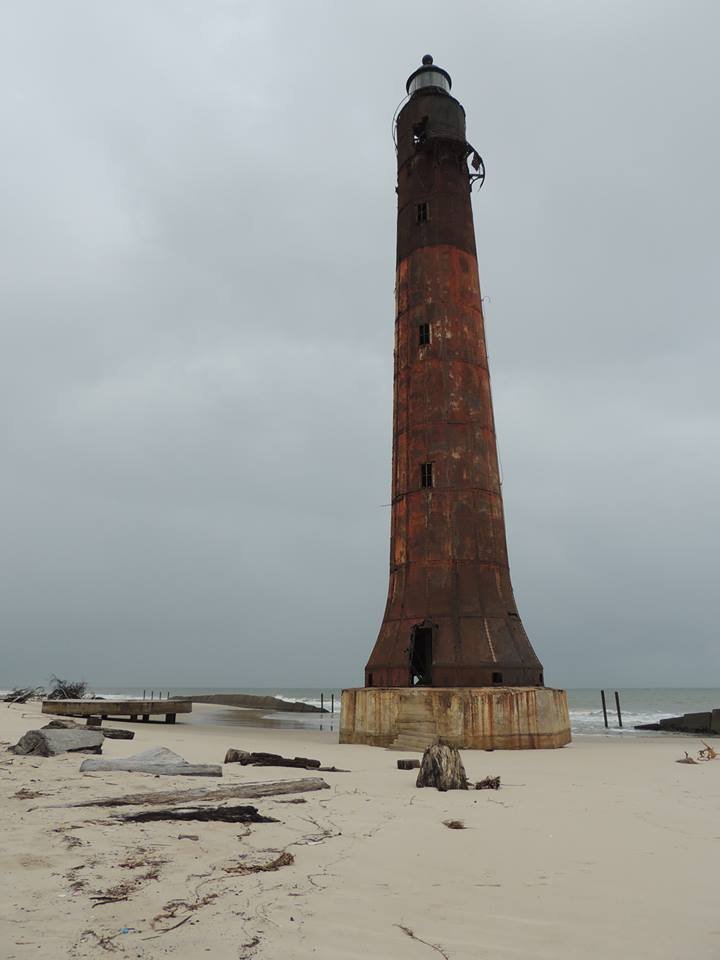
Located at the tip of Mandji Island in the Ogooué River delta, Cap Lopez, just thirty minutes from Port-Gentil’s city center, bears witness to a rich historical tapestry. Once the administrative post and pivotal port for goods and slaves destined for Europe, this neighborhood has evolved into a captivating blend of industrial importance and coastal allure.
The remnants of its illustrious past are encapsulated in the rusted, yet resilient, lighthouse standing tall since 1911. In the 1910s, as timber exports from the Ogooué region sustained the port’s significance, administrative duties shifted to Port-Gentil. Today, Cap Lopez serves as Total’s oil terminal on the right bank, a testament to its continued industrial relevance.
Contrasting with the industrial landscape, the left bank unveils a pristine beach adorned with coconut trees. This picturesque stretch is a haven for artisanal fishing, where locals engage in traditional methods, and Port-Gentil residents escape on weekends. Reputable restaurants and company-branded huts along the shore offer delightful dining experiences, complete with coolers and grills for seaside barbecues.
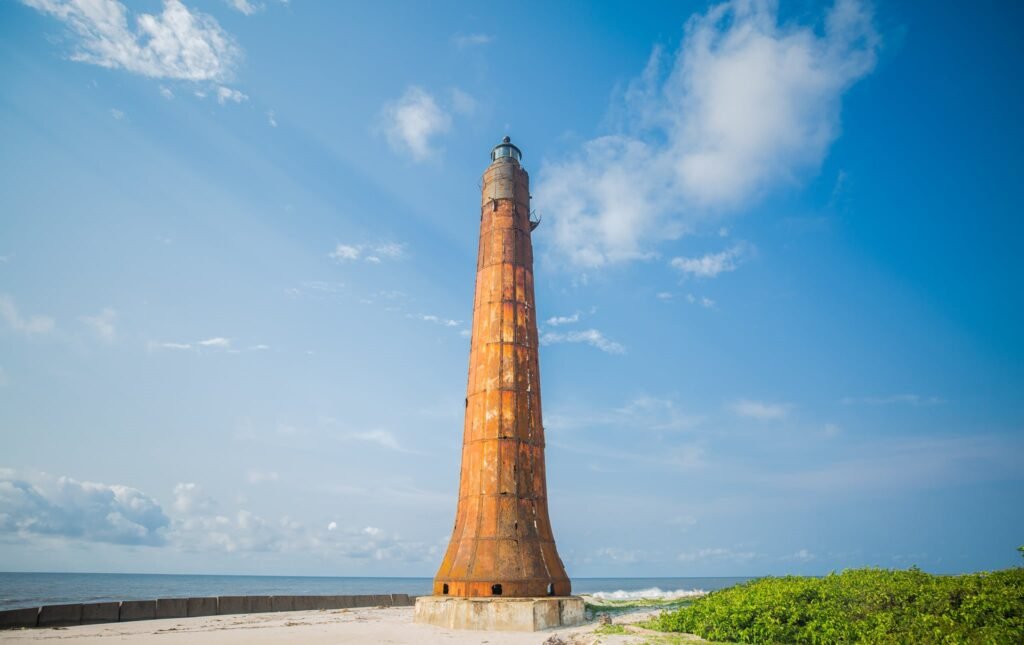
Accessing Cap Lopez is an adventure in itself, with options ranging from boat rides, car journeys, to taxi rides along a pipeline that guides the way. Cap Lopez, originally named Lopez Gonsalvo by Portuguese mariner Lopo Gonçalves in 1480, extends into the Atlantic Ocean, marking Gabon’s westernmost point. The southern limit of the Gulf of Biafra or the Gulf of Guinea, according to interpretations, adds to its geographical significance.
Setté Cama
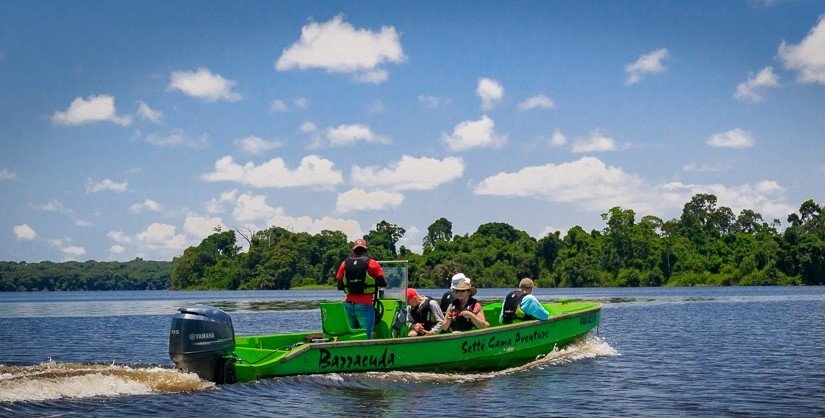
Sette Cama, situated on the southern border of Loango, is a picturesque village nestled between the N’dogo Lagoon and the Atlantic Ocean, marking the final village to the south of the Loango National Park.
The village’s name, Sette Cama, sparks curiosity with various theories about its origin. While the most prevalent suggests a link to a Portuguese shipwreck, the village cemetery contradicts this, lacking Portuguese graves.
Sette Cama is renowned for its world-class sport fishing opportunities. Anglers can indulge in day and night fishing excursions, both in the lagoon and by the ocean, targeting prized catches like red carp, barracudas, trevallies, captains, and the iconic tarpon. To reach Sette Cama, anglers typically start their journey by flying into Gabon’s capital, Libreville, followed by a short charter flight to Gamba. From there, a 45-minute boat ride transports visitors to the village.
Sette Cama’s allure extends beyond fishing, offering a paradise for nature enthusiasts. The village is a gateway to ecotourism adventures, combining canoe trips, hikes, and diverse wildlife encounters amidst the captivating landscapes of forest, savannah, mangrove, and beach. The lagoon itself hosts year-round residents like hippos, with elephants, buffaloes, and antelopes often visible along the beach. Amphibious creatures make sporadic appearances in the mangroves, while the forest boasts gigantic trees inhabited by playful birds and primates.
To access Sette Cama from Gamba, travelers embark on a sandy track heading north or opt for a journey across the lagoon. The 1 hour and 30-minute 4×4 drive through forest and savannah, starting from the airport road, is an adventurous experience. It’s recommended to travel in two vehicles due to the lack of phone network coverage. En route, a stop at the Water and Forest Brigade is required for park registration.
Sette Cama and the N’dogo Lagoon provide an extraordinary setting for unforgettable moments, whether it’s witnessing elephants up close, approaching hippos, or engaging in shore fishing for tarpon. For those seeking adventure beyond fishing, Sette Cama opens doors to a historical journey. In the sixteenth century, it served as a significant European colonial sea port, trading in timber and ivory. While its glory days have faded, the village now houses a museum and an airstrip, positioned at the edge of the Loango National Park.
Loango National Park
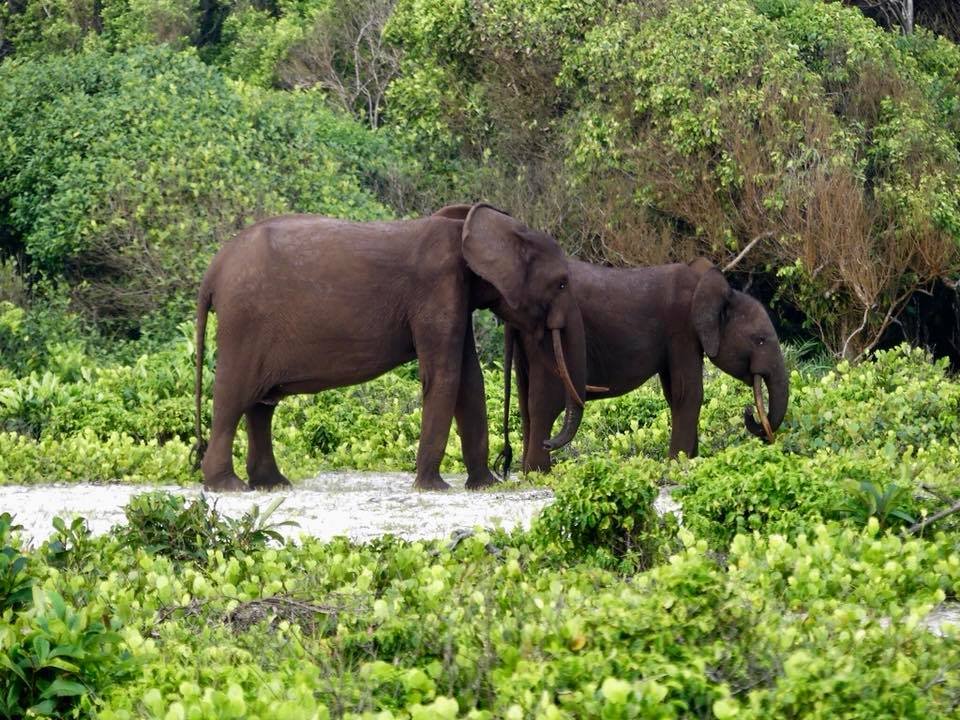
Tucked between the Nkomi and Ndogo Lagoons, Loango National Park sprawls across 1,550 km2 (600 sq mi) of unspoiled landscapes, including pristine forests, sun-kissed beaches, expansive savannas, and vibrant green mangroves. In this enchanting haven, the mesmerizing sight of turquoise waters caressing ivory shores and the vibrant rainforests pulsating with life create an unparalleled experience. Renowned as ‘Africa’s Last Eden’ and whimsically referred to as the ‘Land of the surfing hippos,’ Loango is a captivating destination for nature enthusiasts.
For wildlife aficionados, Loango is a paradise of extraordinary encounters. Picture the awe-inspiring spectacle of forest elephants gracefully traversing the beach, their weathered hides gleaming in the sunlight. Observe troops of playful gorillas swinging through the dense foliage, their primal calls reverberating through the ancient trees. Marvel at the majestic humpback whales breaching the ocean’s surface, their colossal forms overshadowing the surrounding waves. And don’t miss the delightful sight of surfing hippos, a unique experience found only in Loango, guaranteed to bring a smile to your face.
Beyond the renowned “Big Five,” Loango reveals a treasure trove of rare and endemic species, from the elusive sitatunga antelope to the vibrantly colored Loango weaver bird. Birdwatchers will be captivated by the symphony of over 350 avian species, while reptile enthusiasts can track the sinuous movements of forest cobras and Nile crocodiles.
Choosing the perfect time to explore Loango National Park involves immersing yourself in its distinct seasons and the diverse array of wildlife events unfolding throughout the year. The dry season, spanning from December to January and May to September, witnesses the migration of wildlife to the park’s southern region. Conversely, the rainy season, occurring from February to April and October to December, offers a unique set of experiences with various wildlife activities and events during different months.
Gamba
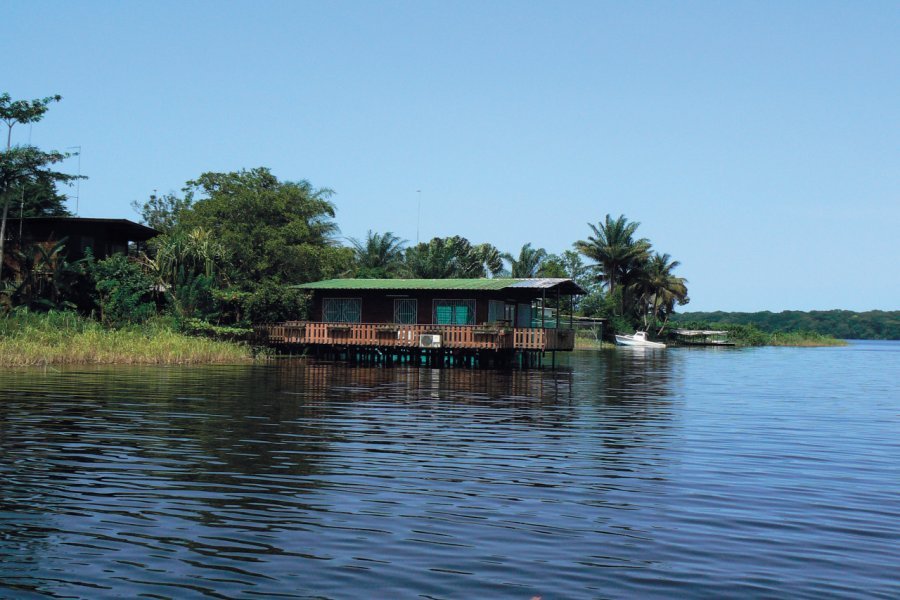
Nestled in the Ogooué-Maritime province of Gabon, Gamba is a town that has evolved from a simple fishing village to a unique destination with a rich blend of nature, culture, and history. Gamba’s metamorphosis began in 1963 with the establishment of Shell, altering the town’s structure and drawing in a diverse population. Divided into six neighborhoods, Gamba radiates a charm that extends beyond its architectural appeal. The city’s heart, Plaine 3, buzzes with a dynamic atmosphere, particularly along the vibrant streets of the “death corridor” from Monday to Saturday evenings.
Following the oil crisis in 2017, Shell’s assets were acquired by Assala Energy, marking a significant shift. Despite the transfer of 400 employees, the town faced economic challenges, resembling a large, abandoned village. Yet, Gamba retains its allure through the warmth of its inhabitants leading peaceful lives by the lagoon.
Gamba: A Gateway to Natural Wonders
Gamba is primarily known as the gateway to the Batéké Plateau National Park, an exceptional nature reserve housing a rich and varied fauna and flora. Gamba is also a starting point for exploring the beautiful beaches of the Gabonese coast.
Batéké Plateau National Park boasts a diverse ecosystem, allowing visitors to witness elephants, buffaloes, gorillas, and an array of bird species. The park’s landscapes, characterized by vast plains, green hills, and winding rivers, offer captivating vistas for hiking enthusiasts.
Beyond the National Park
Gamba’s appeal extends beyond the national park, inviting tourists to explore its stunning white sandy beaches. The region provides an ideal setting for relaxation, swimming, and water sports such as fishing, scuba diving, and surfing. Rich in culture and history, Gamba is also a city rich in culture and history. You can visit the Centre de recherche médicale de Franceville (CERMEL), which conducts research on tropical diseases and offers guided tours for visitors interested in medical research. You can also stroll through downtown Gamba to discover colonial architecture and visit local markets to buy traditional handmade products.
Where to Stay and How to Get There:
Gamba offers various accommodation options, from quality hotels with modern facilities to local restaurants serving delicious cuisine based on fresh fish and regional dishes. Accessible through the Gamba Airport with regular flights from Libreville, the capital of Gabon, getting around is convenient via taxis or rental cars.
Note that it takes around 13 hours by car from Libreville to get to Gamba.
Petit Loango – Gabon

Discover the Wetland of Petit Loango, a protected haven in Gabon recognized under the Ramsar Convention since 1986. Nestled in the southwest region, this coastal gem spans 4,800 km2 within the Gabonese coastal plain. The area encompasses the Petit Loango Wildlife Reserve (500 km2), Iguéla hunting grounds (1,800 km2), and Ngové-Ndogo hunting territory (2,500 km2).
This diverse landscape features lakes, rivers, and marshes against a picturesque backdrop of savannahs, mangroves, and rainforests. Petit Loango is a sanctuary for a variety of marine life, with nesting grounds for marine turtles and a recorded count of 455 bird species, predominantly forest dwellers.
Notable water birds, including dwarf, caugek, royal, and hansel terns, as well as the Brown Gull, find refuge in this wetland. The site is also home to vulnerable and rare species such as hippos, gorillas, and elephants, with nesting grounds for threatened turtles like the leatherback, green, and hawksbill.
Beyond its rich biodiversity, Petit Loango plays a vital role in flood control and sediment capture, contributing to bank stabilization through its lush riparian vegetation. Despite its designation as a wildlife reserve and low population density, the area faces potential threats from tourism and oil activities in the surrounding regions.
As the site opens up to the Atlantic Ocean, plans for permanent communication routes are in consideration. The synergy with Loango National Park, established in 2002, enhances the protection and conservation efforts for this remarkable ecosystem.
Moukalaba Doudau National Park

Moukalaba-Doudou National Park, sprawling across 449,548 km2 and situated approximately 600 km from Libreville, is a diverse natural haven featuring rainforests, mountains, dry savannahs, lakes, and rivers. Home to the largest concentration of primates in Gabon, including 5,000 chimpanzees and gorillas, this park also hosts forest elephants, buffaloes, Defassa waterbucks, and three species of African crocodiles, including the Nile crocodile. Ornithologists will appreciate the park’s rich avian diversity, encompassing 380 different bird species.
The National Agency for National Parks (ANPN) emphasizes gorilla vision tourism as a priority, aiming to welcome 750 visitors annually by 2023. The park’s habituation efforts, led by Kyoto University and the NGO PROGRAM, have semi-habituated gorilla groups like “Kind” and “Mussiru” for tourism. The habituation process typically takes 7 to 8 years.
The park, formed by merging Moukalaba Dougoua Wildlife Reserve and parts of the Doudou Massif, spans 4,500 km2. Accessible by car from Libreville through National Road 2, the journey offers breathtaking views of equatorial forests, savannahs, and villages. The road passes through provincial capitals like Lambaréné and Mouila, where the warm hospitality of Gabonese people is evident.
Upon reaching Tchibanga, the nearest town to the park, travelers can recharge and explore various culinary options, from Chinese to local Gabonese dishes. Tchibanga’s nightlife, centered around the “commercial district,” adds a vibrant touch to the experience.
From Tchibanga, two routes lead to Moukalaba Doudou National Park. The first involves driving to Doussala, the main gateway, while the second, more adventurous route, leads to Dighoudou and requires a trek to Camp Mbani. This camp, initially set up for park work teams, now accommodates visitors and provides a unique opportunity to observe diverse wildlife along the Mbani River.
The park also offers immersive experiences, such as the “Gite de Corbey” near the villages of Mourindi and Bougoulou. This former hunting ground features hilly savannas, a small lake, and a forest gallery with sitatunga and Defassa waterbucks.
Embarking on an excursion to Moukalaba-Doudou National Park promises a one-of-a-kind adventure, allowing visitors to discover the wonders of the equatorial forest. Permits for park entry are available at the ANPN office in Tchibanga, making this journey accessible and memorable for nature enthusiasts and wildlife lovers.
Fernan Vaz Lagoon
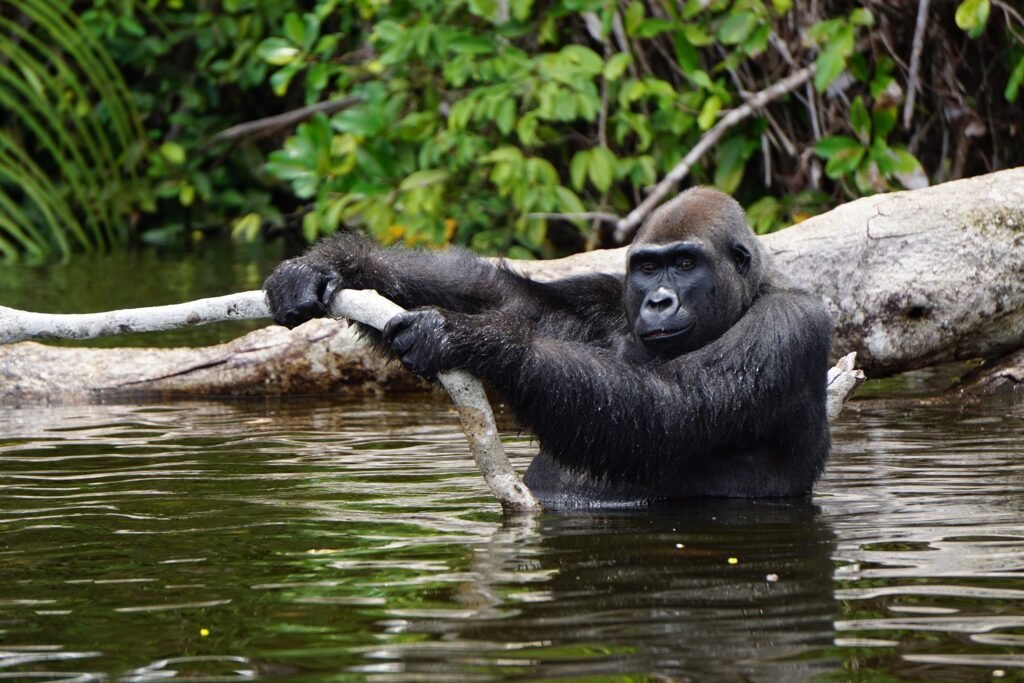
Fernan Vaz Lagoon, situated along the Atlantic coast of Gabon, is a prominent feature in the Ogooué maritime area. Named after Fernão Vaz, the first European to reach it, the lagoon boasts rich wildlife and is home to the renowned Mission Saint Anne church, constructed in 1889 by Gustav Eiffel. The primary settlement on the lagoon’s shore is Omboué.
Notable attractions:
- Mission Saint Anne: Constructed in the 19th century, this church, known for its rusty red color, stands out as a captivating historical site near Fernan Vaz Lagoon.
- Conservation Efforts: The area actively participates in several conservation initiatives. Gorilla Island, within the lagoon, hosts a sanctuary and gorilla rehabilitation center.
- Omboué: The town of Omboué, located at the gates of Fernan Vaz Lagoon, is surrounded by water, creating a unique setting for visitors.
Travel tips:
- The road to Omboué is in poor condition; opting for the river route is recommended for a more pleasant and magical experience.
Fernan Vaz Lagoon, also known as Nkomi Lagoon, stands out as the region’s primary tourist attraction. Navigating its waters provides an opportunity to witness breathtaking landscapes, from villages to scenes of daily life. The lagoon’s abundance of fish supports local canoeists practicing traditional seine fishing.
Caution is advised due to the presence of crocodiles and hippos in the water. The Fernan Vaz Gorilla Project, operating from two islands in the lagoon, serves as an educational and rehabilitation center for western lowland gorillas in Gabon. Their mission includes rehabilitating orphaned gorillas rescued from the illegal bushmeat trade and promoting great ape conservation through education and eco-tourism.
